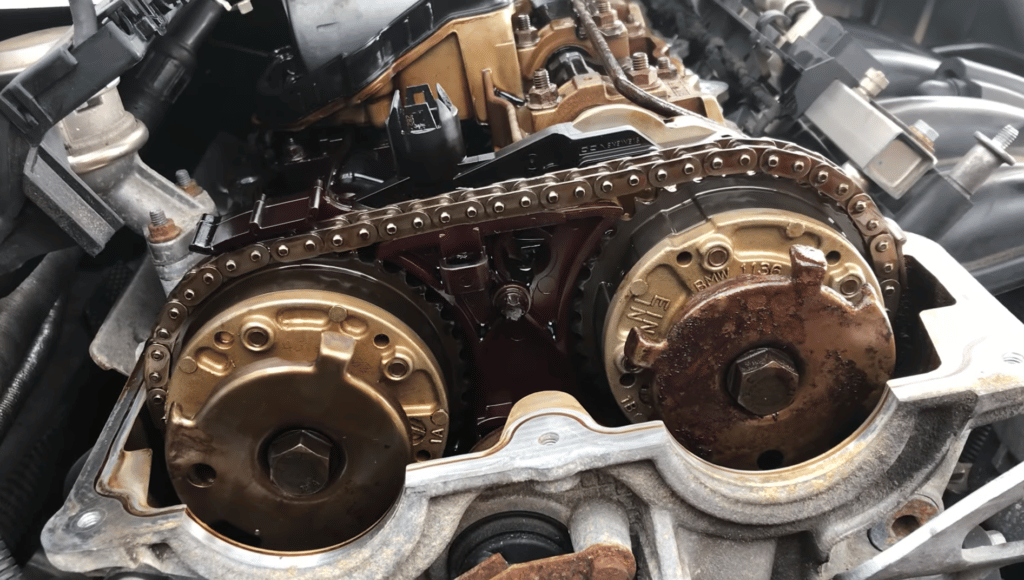Are you having a problem with your VANOS? This page will help you better understand and diagnose the system!
What is the VANOS?

The so-called camshaft adjustment, is known at BMW under the name “Variable Camshaft Adjustment (VANOS)“. The VANOS is used for flexible control of the valve opening times in an internal combustion engine (gasoline engines), enabling an increase in efficiency.
GAIN MORE CONTROL OF YOUR CAR WITH THE CARLY FEATURES
Check the exact pricing of Carly for your car brand!

Fast International Shipping with DHL

14 days adaptor return policy

Excellent customer support

Lifetime warranty in the hardware
SEEN IN







This increase in efficiency has the effect of increasing both the engine’s power and torque in certain speed ranges. In addition, fuel consumption is also reduced with the help of the VANOS.
The variable camshaft phasing ensures an increase in torque in the low and medium engine speed range. At the same time, a reduced amount of residual gases at idle can be realized via the smaller valve overlap. Together with exhaust gas recirculation, nitrogen oxides are reduced in the partial load range.
How does the Vanos work?
The VANOS adjustment unit is installed between the camshaft and the timing chain.
With a conventional valve train without a VANOS unit, the angular position of the camshaft to the crankshaft always remains the same. The variable camshaft control can variably adjust the spread of the camshafts depending on the speed and load. The camshaft itself is not changed, but only its angle of rotation or valve lift.
The camshaft is driven by the crankshaft via the timing chain. The valve opening times (also called timing) depend on the revolutions of the camshaft and are therefore the same in every speed range. The camshaft phaser breaks the rigid link between engine speed and timing and enables variable valve timing. Adjustment of the camshaft phaser is made possible by means of oil pressure.
What is A double VANOS?
On most modern vehicles, the camshaft phasers are set to
the intake and exhaust side of the camshaft. But there are also some
Engines in which the camshaft phaser is installed on the intake side only
is. The double VANOS is used to be able to control both the intake and exhaust camshafts.
- On the intake side, the adjustment is mainly used to determine the intake closure of the valves. This allows the torque and engine performance to be optimized. In addition, the adjustment of the intake camshaft in the low and medium speed range is also used for internal exhaust gas recirculation and to increase the engine’s torque. At higher speeds, the focus is on engine performance.
- On the exhaust side, the variable camshaft timing is mainly used to control the residual gas volume (internal engine exhaust gas recirculation). This has a positive effect on fuel consumption. In addition, the combustion temperature drops. The result is that nitrogen oxide formation is reduced. At idle, a very low residual gas content improves smooth running. Another advantage of the VANOS on the exhaust side is the ability to improve exhaust gas dynamics in the lower speed range and thus increase torque. The adjustment of the exhaust camshaft thus serves to achieve optimum idle quality or maximum exhaust gas recirculation rates.
Components of the variable camshaft phasing
VANOS adjustment unit
The camshaft phaser is usually located between the camshaft sprocket/drive sprocket and the camshaft. The adjustment of the camshafts is realized via a solenoid valve. This allows an adjustment of the timing chain geometry.

VANOS solenoid valve
To control the camshaft phasing, an oil-pressure-operated solenoid valve is used. These solenoid valves are usually located on the front cover of the vehicle.
As soon as the correct camshaft position is reached, the oil pressure is kept constant in the solenoid valve. This keeps the camshaft in the required position.

Camshaft sensor
The camshaft sensor detects the position of the camshaft. To be able to check the position of the camshaft, a so-called increment wheel (sensor wheel) is installed on the camshaft.
The camshaft sensor usually works with a hall effect. The camshaft sensor passes this signal directly to the engine control unit.
The camshaft sensor is usually attached to the cylinder head cover on the intake side. If the crankshaft sensor fails, the engine control unit can determine the engine speed via the intake camshaft sensor.
In addition, the camshaft sensor also provides feedback on the camshaft position for controlling the camshaft phasing.

Cost of repair on the VANOS
Assessing the cost of repairing the VANOS without doing specific troubleshooting is very difficult because the cost can vary greatly depending on the cause of the fault. For example, only a cheap part, such as the camshaft sensor or a cable could be defective, or the much more expensive camshaft phaser. As a rule, the costs are then in the range of about US$ 20 to US$ 1500.
For this reason, troubleshooting in the event of a fault in the VANOS should be carried out very carefully so that the fault can really be precisely narrowed down and finally rectified.
By the way, a defective camshaft phaser can also be overhauled. This helps to keep the cost of repair as low as possible.

